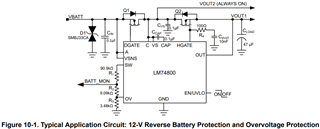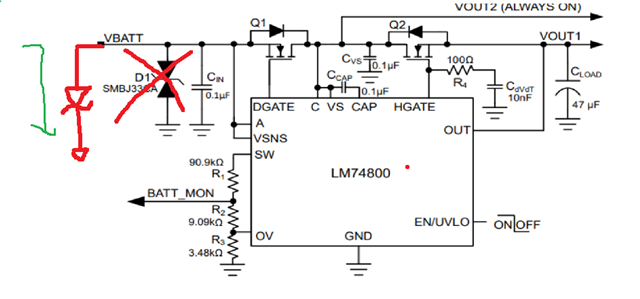Other Parts Discussed in Thread: LM7480
Tool/software:
Hi,
I would like to know why is requiered a bidirectional TVS diode at the input of LM7480 to protect against reverse transients instead of an unidirectional TVS diode. I mean, if my application is intended to work at 24V DC I understand that I have to protect the circuit if I have a voltage greater than my working voltage but with negative transients if I use a unidirectional TVS the voltage seen by the LM7480 would be -0,7V. What is the point of using a bidirectional TVS which would clamp the negative transient in a more negative voltage? To summarize, What is the advantage of using SMBJ33CA instead of SMBJ33A in this example application.

Thank you in advance for your support.



